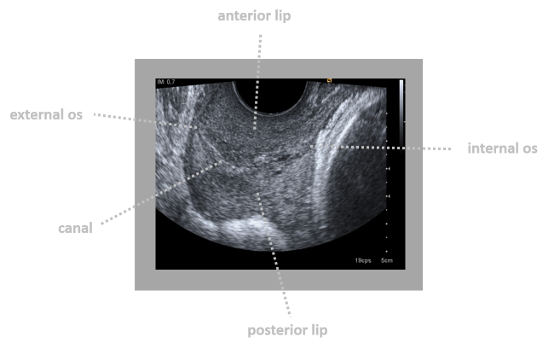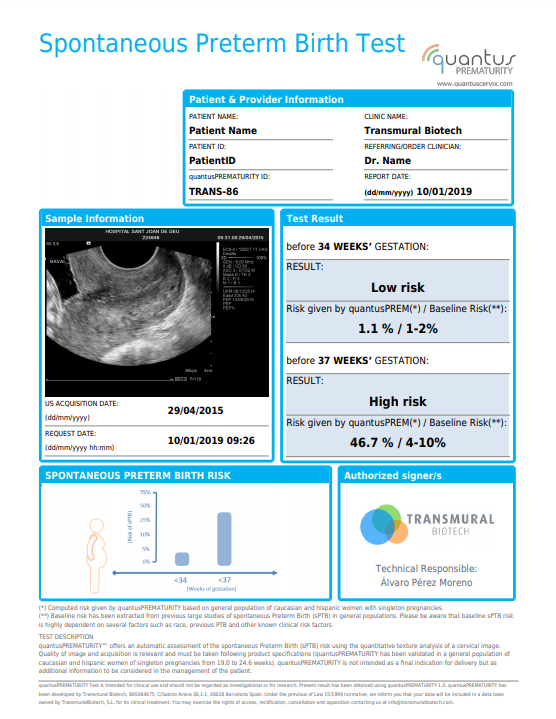
When to use quantusPREMATURITY?
From an Evidence-Based Medicine to a Personalized Medicine
During the second-trimester morphological screening ultrasound, it may be very useful to associate transvaginal exploration to assess the risk of spontaneous preterm birth and estimate the need to perform additional controls or initiate specific therapeutic strategies, in order to reduce this risk. Predicting the risk of SPTB before week 34 is especially relevant at the clinical level, since it represents the gestational age with the highest number of fetal complications associated with prematurity.
quantusPREMATURITY is indicated for single pregnancies between 19 and 24 weeks of gestation to determine the risk of spontaneous premature labor as a consequence of premature cervical remodeling. It has been developed to be used as a universal screening tool in pregnant women of the general population. However, those patients with increased risk of SPTB with a history of SPTB in previous pregnancy, history of conization and / or presence of uterine malformation, could benefit especially of this test with the purpose of adapting its monitoring and / or treatment in a personalized way.
For example, in a first pregnancy of 20 weeks, where the measurement of the cervical length is 25 mm and in the directed anamnesis the patient does not present any other risk factor of preterm birth, the baseline risk for SPTB for <34 weeks is 1.7% and for <37 weeks is 4.8%. The patient is given, along with the morphological ultrasound, a transvaginal ultrasound to assess the risk of SPTB. With a quantusPREMATURITY result of "low risk" the risk of SPTB would reduce <34 weeks to 1.1% and in <37 weeks to 4.1%, while a result of "high risk" would increase it to 51.6% for <34 weeks and 73.3% for <37 weeks. Therefore, knowing early the risk of SPTB by means of a simple transvaginal ultrasound can have a clear impact on the clinical management of the case to assess the following controls or initiation of personalized treatments
How to use quantusPREMATURITY?
Performing the test is simple. It only requires 3 steps:
 Acquire the image
Acquire the image
quantusPREMATURITY requires a transvaginal ultrasound of the cervix in DICOM format. It is the typical plane for measuring cervical length. Within the application there is a simple guide that shows how to make these acquisitions.
quantusPREMATURITY is compatible with the most common ultrasound machines on the market (Siemens, General Electric, Toshiba, Aloka…).At the same time, a simple protocol has been designed to validate compatibility with new ultrasound.

 Use the quantusPREMATURITY web application to analyze the image.
Use the quantusPREMATURITY web application to analyze the image.
This application is a simple tool that allows you to send the image you want to analyze to the system. To do this, only four simple steps are required:
.png)
 Get the result of the web in a few minutes
Get the result of the web in a few minutes
The result will be available on the quantusPREMATURITY website in a few minutes. The system can be configured to send a notification by e-mail once the results are available. At the same time, a customized report can be downloaded in PDF format.





